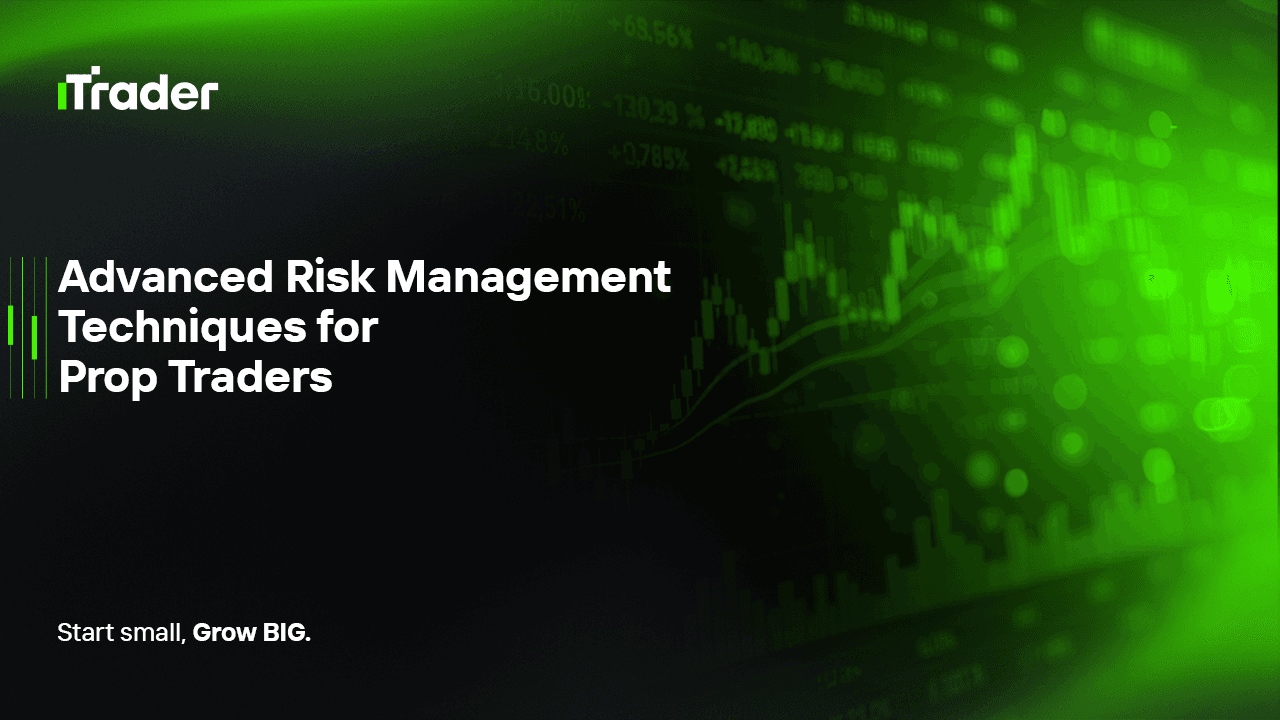2025-07-21
Trading for a proprietary firm differs significantly from retail trading, primarily in the approach to risk and responsibility. Managing someone else's capital under strict performance thresholds requires a more refined, systematic, and adaptive risk management framework.

In this blog, we break down the advanced techniques used by prop traders to control exposure, respond to changing conditions, and ensure long-term strategy survival.
AI Summary:
This blog outlines advanced-level risk management strategies specifically designed for professional proprietary traders. In volatile and uncertain markets, preserving capital and maintaining consistent performance require more than basic tools. We explore dynamic position sizing, correlation-aware exposure, trade clustering, adaptive drawdown controls, risk-of-ruin analysis, and Monte Carlo simulation, among other modern methodologies. These approaches help traders navigate institutional expectations, reduce structural risks, and develop robust trading systems.
For prop traders, the number one priority is not just generating profit, but avoiding destruction. In a high-risk environment, the following principles are fundamental:
Basic fixed-lot or fixed-percentage sizing is not enough for advanced trading. Instead, more adaptive approaches are used:
Adjusts trade size based on current market volatility.
Formula:
javaCopyEditPosition Size = (Risk Capital per Trade) / (ATR * Multiplier)
Adjusts position size based on recent equity curve performance.
Prop traders often run multiple strategies and instruments simultaneously, making correlation management essential:
Measures how similar different strategies respond to market conditions.
Losses don’t always occur randomly; they often form clusters. These are referred to as “structural drawdowns.”
Use psychological and statistical limits to manage open exposure.
RoR calculates the likelihood that a trading strategy will completely deplete capital.
iniCopyEditRoR = [1 - (B/A)] ^ A
Since market results are rarely linear, Monte Carlo simulation helps:
While some firms impose hard exposure caps (e.g., 5 lots total), advanced traders apply:
Dynamic caps based on real-time risk conditions.
Risk control must account for external conditions, not just internal metrics.
Top proprietary traders recognize that mental state is part of risk exposure.
Defend against overconfidence, revenge trading, confirmation bias
Advanced prop trading requires Order Management Systems (OMS) and Risk Management Systems (RMS):
Success in proprietary trading isn’t just about finding profitable strategies—it’s about managing risk with surgical precision. Beyond basic stop losses and 1% rules, serious traders employ techniques like correlation analysis, volatility-adjusted sizing, trade clustering, adaptive drawdown thresholds, and Monte Carlo simulations to build resilient systems.
Ultimately, the goal is not just to survive, but to thrive with consistency, clarity, and emotional control, even in the most unpredictable market environments.
© 2025 iTrader Global Limited | 公司注册号 15962
iTrader Global Limited 位于科摩罗联盟安儒昂自治岛穆察姆杜 Hamchako,并受科摩罗证券委员会(Securities Commission of the Comoros)许可及监管。我们的牌照号为 L15962/ITGL。
iTrader Global Limited 以“iTrader”作为交易名称,获授权从事外汇交易业务。公司的标志、商标及网站均为 iTrader Global Limited 的专属财产。
风险提示: 差价合约(CFD)交易因杠杆作用存在高风险,可能导致资金快速亏损,并非适合所有投资者。
交易资金、差价合约及其他高杠杆产品需要具备专业知识。
研究显示,84.01% 使用杠杆的交易者会遭受亏损。请务必充分了解相关风险,并确认在交易前已做好承担资金损失的准备。
iTrader 特此声明,不会对任何个人或法人在杠杆交易中产生的风险、亏损或其他损失承担全部责任。
本网站提供的新闻及信息仅用于教育目的。用户应独立且审慎地作出金融决策。
限制条款: iTrader 不会向法律、法规或政策禁止此类活动的国家或地区居民提供本网站或相关服务。若您居住在限制使用本网站或服务的司法管辖区,您有责任确保遵守当地法律。iTrader 不保证其网站内容在所有司法管辖区均适用或合法。
iTrader Global Limited 不向以下国家/地区的公民提供服务,包括但不限于:美国、巴西、加拿大、以色列及伊朗。